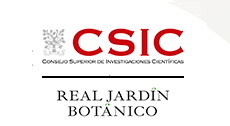Scientific Area
Phylogenomics, historical geography, adaptive radiation, and quantitative floral convergence in lilies (Lilium)
ID: 613 / 429
Category: Abstract
Track: Pending
Proposed Symposium Title: Phylogenomics, historical geography, adaptive radiation, and quantitative floral convergence in lilies (Lilium)
Authors:
Thomas J. Givnish1, Mark Skinner2, Ivana Rešetnik3, Nursel Ikinci4, Ricardo Kriebel5, Alan R. Lemmon6, Emily Moriarty Lemmon7, Yundong Gao8
Affiliations: 1 Department of Botany, University of Wisconsin-Madison, Madison, USA 2 Skinner & Associates, Portland, USA 3 Department of Biology, University of Zagreb, Zagreb, Croatia 4 Department of Botany, Abant Izzet Baysal University, Bolu, Turkey 5 Department of Botany, California Academy of Sciences, San Francisco, USA 6 Department of Scientific Computing, Florida State University, Tallahassee, USA 7 Department of Biological Science, Florida State University, Tallahassee, USA 8 Department of Botany, Chinese Academy of Sciences, Chengdu, China
Abstract:
Lilies – with ca. 125 species in Lilium and the former genus Nomocharis – are restricted to the Northern Hemisphere, with centers of diversity in East Asia, southern Europe, the Caucasus, and eastern and Western North America. Species vary widely in habitat and in floral form, orientation, color, and fragrance. To identify relationships within Lilium and reconstruct its adaptive radiation and geographic spread, we conducted the first phylogenomic analysis of relationships in the genus by sequencing, assembling, and analyzing more than 400 single-copy nuclear loci and whole plastomes of almost all extant species. The maximum-likelihood plastome phylogeny fails to resolve any of the traditional, morphology-based sections as monophyletic, with two origins for North American § Pseudolirium, two for Himalayan/Tibetan § Nomocharis, four for East Asian § Sinomartagon, two for Asian § Leucolirion, two for Asian § Archelirion, three for European and Central Asian § Martagon, two for East Asian § Daurolirion, and two for European § Liriotypus. The nuclear phylogeny, however, resolves most sections as monophyletic, except for polyphyletic § Sinomartagon and § Leucolirion. Reconstructions of historical biogeography point to an origin in East Asia or Himalayas/Tibetan Plateau, with subsequent dispersals into North America, the Himalayas/Tibetan Plateau, Europe, Formosa, Japan, and the Philippines. Within the North American clade § Pseudolirium, we found strong quantitative convergence in flower shape, orientation, and color associated with pollination by hummingbirds, sphingid moths, and bees, and apparent retention of ancestral characters in species pollinated by butterflies.




